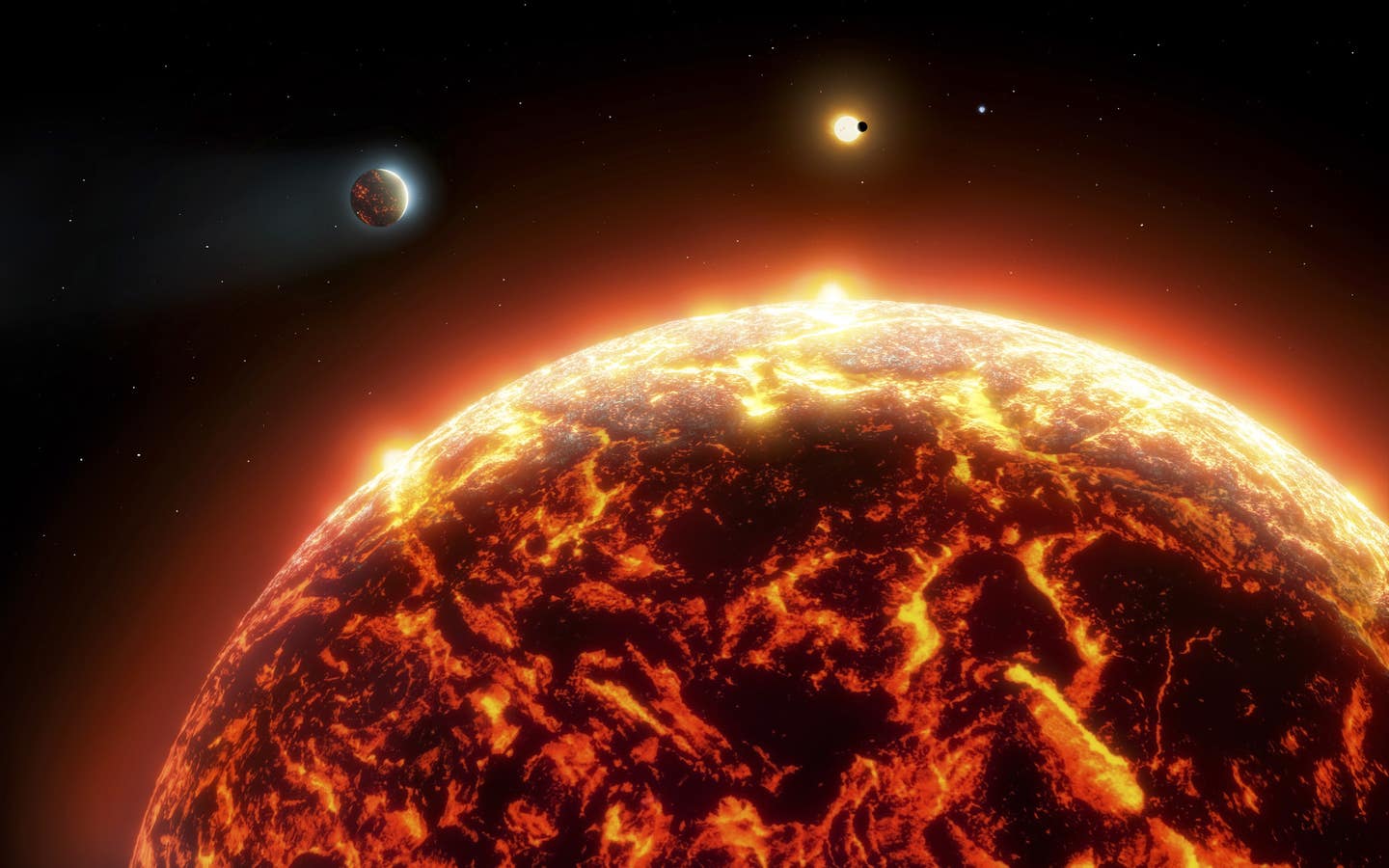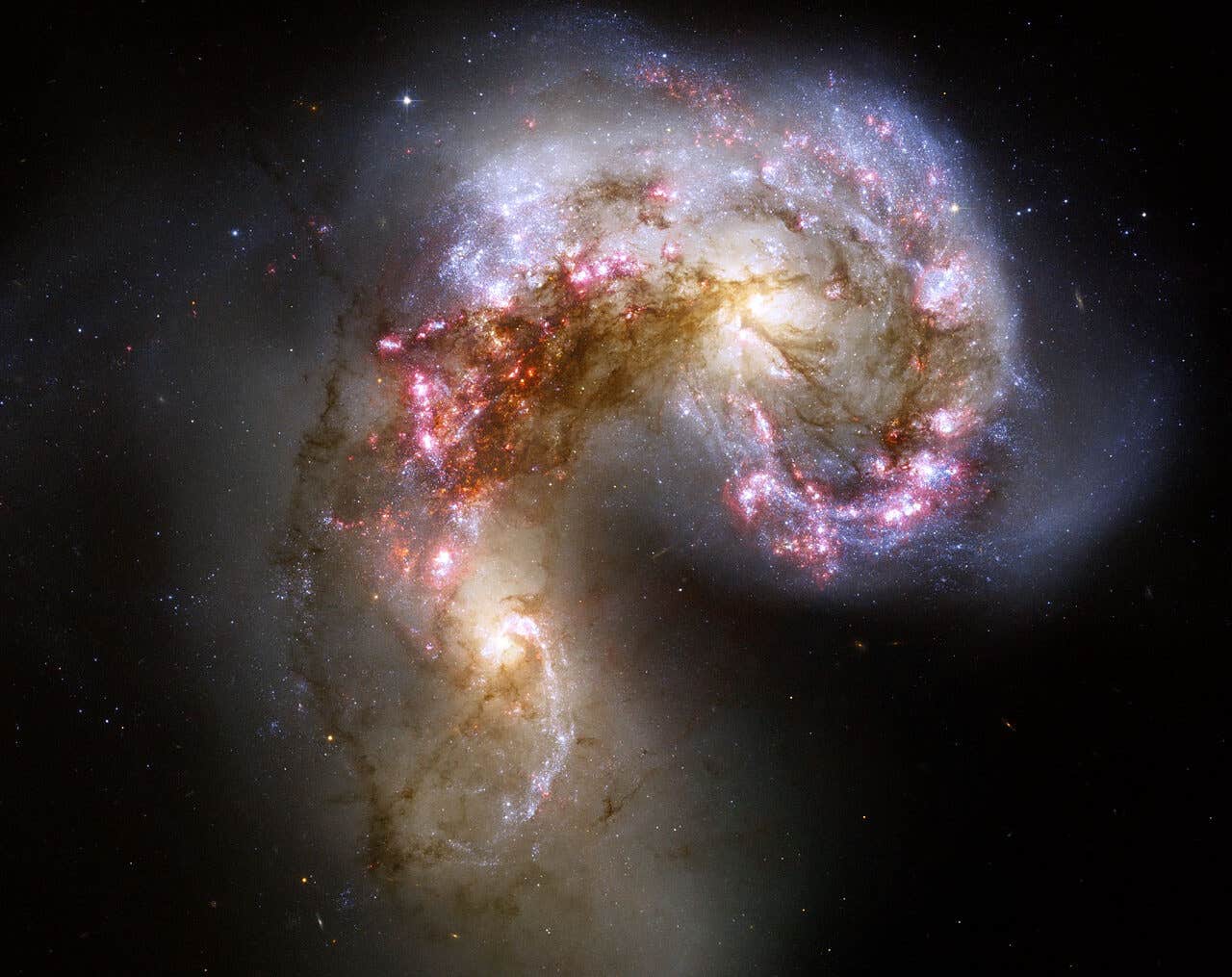Groundbreaking discovery sheds new light on rare ‘lava planets’
Lava planets offer new clues about rocky planet evolution, with JWST set to test bold predictions from recent simulations.

New research reveals how lava planets evolve chemically and structurally over billions of years. (CREDIT: Getty Images)
Lava planets don’t play by the rules of our solar system. These scorching-hot worlds, some no bigger than Earth, orbit so close to their stars that a full year lasts less than a day. With their surfaces hot enough to melt and even vaporize rock, they present conditions unlike anything familiar on Earth, Mars, or Venus. Yet, it’s precisely their extreme environments that make them perfect candidates for exploring how rocky planets evolve.
A new study published in Nature Astronomy and led by Charles-Édouard Boukaré, a physics professor at York University, offers a fresh framework to understand how these exotic planets change over time.
The research blends geophysics, atmospheric science, and mineral chemistry to examine what happens when molten rock, vapor, and solid crust interact for billions of years. According to Boukaré, “Lava planets are in such extreme orbital configurations that our knowledge of rocky planets in the solar system does not directly apply.”
A Tale of Two Interiors
The researchers used complex numerical simulations to explore how these planets evolve. Two extreme interior states emerged from the models. The first scenario applies to younger lava planets with fully molten interiors. In these, the atmosphere reflects the composition of the whole planet. Heat circulates efficiently beneath the surface, keeping the nightside active and hot.
In contrast, older planets appear quite different. Their interiors have mostly solidified, leaving only a shallow magma ocean on the dayside. The atmosphere in this case becomes chemically altered. Elements like sodium, potassium, and iron vanish over time, pulled into the crust or lost to space. The nightside cools into a quiet, solid slab.
Each of these two end-member states gives scientists a way to infer a planet’s age and internal chemistry based on what’s seen from afar. And thanks to their short orbits and locked rotations, lava planets always show one face to their star, letting astronomers clearly view both the fiery dayside and the frozen nightside.
Related Stories
- JWST reveals surprising origin of fiery giant planet reaching 3000°C
- Scientists find Earth-like exoplanets to be common in the universe
- White dwarf stars could host life-supporting planets, study finds
The Chemistry of Melting Worlds
At the core of this new framework is the idea of chemical distillation. When rock melts or vaporizes, certain elements prefer specific phases. For example, magnesium and silicon often remain in the liquid or solid, while lighter elements like sodium and potassium escape more easily into vapor. Over time, this repeated cycle of melting, vaporizing, and solidifying reshapes a planet’s outer layers.
“These processes, though greatly amplified in lava planets, are fundamentally the same as those that shape rocky planets in our own solar system,” says Boukaré.
The team found that chemical fractionation between solid and liquid rock could lead to striking changes in surface and atmospheric composition. On Earth, we see evidence of similar processes in ancient lava flows and planetary crusts. But on a lava planet, this mixing and separation happen continuously for billions of years due to constant exposure to extreme heat and vacuum.
Modeling with Fresh Eyes
The simulations didn’t start with bold claims. Boukaré admits the work began as a highly exploratory effort. His earlier studies with collaborators at Université Paris Cité had developed models of molten rocky planets, but they hadn’t yet applied them to these unique exoplanets.
This time, the team brought in a broader set of expertise. Co-authors include researchers from McGill University, University of St Andrews, University of Waterloo, and Université Paris Cité. Their combined effort created what Boukaré calls a “conceptual framework for interpreting evolution,” allowing scientists to link atmospheric data to internal processes.
“This paper is an important step toward connecting the interior dynamics and chemical fingerprints of lava planets,” he says.
To support the study, the team secured 100 hours of observation time with the James Webb Space Telescope (JWST). The JWST’s powerful infrared sensors will allow scientists to detect the chemical makeup of lava planet atmospheres, confirming or refuting predictions from the models. Lead observations will be conducted by Prof. Lisa Dang of the University of Waterloo.
“If we can observe and distinguish old lava planets from young ones,” says Boukaré, “it would mark an important step toward moving beyond the traditional snapshot view of exoplanets.”
Winds, Waves, and Magma Oceans
The planet's tidally locked state also creates an unusual surface dynamic. While the dayside remains molten, the nightside cools into solid crust. Winds generated by the stark temperature contrast sweep vapor and heat across the planet, influencing how materials move between hemispheres. Earlier studies had examined these supersonic winds and how they stir magma oceans, but they left out something critical—how the molten rock interacts with the solid mantle beneath.
This study takes that next step. It focuses not just on surface behavior but also on how the entire silicate interior behaves. Rock-forming elements like magnesium, silicon, and iron behave differently in molten and solid states. Incompatible elements stay in the melt, building up over time and changing the chemical fingerprint of the magma ocean.
For a lava planet, the melt never fully disappears. Unlike magma oceans in our own solar system, which freeze within hundreds of millions of years, lava planets keep their magma oceans for billions of years. That gives plenty of time for long-term chemical separation between vapor, liquid, and solid.
A Planet's Life Story in Its Atmosphere
The ability to peer into the internal state of a planet just by analyzing its atmosphere is a game-changer. JWST will allow astronomers to test whether elements like sodium and potassium appear in the vapor above lava planets. Their absence could signal a more evolved, solidified interior. Their presence would point to a younger, still-molten world.
These insights don’t just tell us about lava planets. They help scientists understand how rocky worlds evolve more generally, including Earth-like planets in other solar systems.
While lava planets are too hot to host life, they are ideal laboratories for testing how rock and atmosphere interact over long timescales. And with JWST’s observations on the horizon, you’re likely to hear a lot more about these molten exoplanets in the near future.
Note: The article above provided above by The Brighter Side of News.
Like these kind of feel good stories? Get The Brighter Side of News' newsletter.



